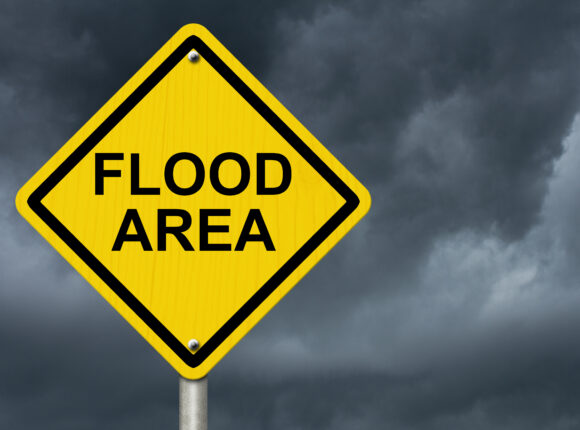More than half of the U.S. population resides in a county that is likely to experience stormwater system failure due to flooding from heavy rainfall events, according to a new report published by First Street Foundation.
Another 17.7 million properties across the country are at substantial flood risk, which is more than two times greater than the amount included in FEMA’s 1-in-100 year Special Flood Hazard Area (SFHA), the report found.
FSF’s “The 8th National Risk Assessment: The Precipitation Problem” reveals an urgent need for accurate rainfall data at the federal level. The report states that National Oceanic Atmospheric Association (NOAA) and FEMA rely on outdated precipitation data.
NOAA’s current analyses of rainfall estimates don’t reflect present rainfall conditions or the changing climate and are inconsistent across regions, the report said. NOAA received appropriations from Congress in 2023 to update its analyses but such work will not be completed until 2027.
The FEMA Special Flood Hazard Area (SFHA) – the current authoritative flood risk information standard in the U.S. – doesn’t adequately account for precipitation, which leaves over half the country unaccounted for flood risk, according to the report.
FSF created a precipitation model (FSF-PM) to correct NOAA’s inaccuracies and provide a better understanding of heavy precipitation occurrence and flood risk. What the NOAA labels as 1-in-100 year precipitation events are estimated by FSF-PM to occur in many locations more frequently than previously estimated, the report said.
Fifty-one percent of the population is now more than twice as likely to experience what the local communities would consider a 1-in-100 year flood, according to FSM’s modeling.
Parts of the Northeast, the Ohio River Basin, Northwestern California, the Texas Gulf Coast and the Mountain West are modeled to experience a 1-in-100 year event every five to 10 years.
Last summer the U.S. experienced an example of the extreme precipitation events that FSF-PM forecasts will occur with greater frequency.
Five separate events associated with the previously thought of 1-in-1,000 frequency occurred between July 26 to August 22, spanning from Illinois to California.
“[These] events should no longer be accurately characterized as a 1-in-1,000 year event in the current climate conditions due to changes in baseline expectations for precipitation estimates,” the report said.
Outdated characterization of flood risk is further exacerbated by the FEMA SFHA, the report said, citing the lack of precipitation risk integration used by SFHA.
There are over 8 million properties not included in SFHA that are at risk of flooding due to precipitation, FSF’s flood model found. The states with the highest percentage of their properties not included in the SFHA due to precipitation risk include Washington D.C. (91%), Mississippi (90%), Iowa (83%), Kentucky (83%), and Rhode Island (83%), the report said.
Though FEMA’s introduction of Risk Rating 2.0 adds current pluvial (flash flood) risk in its flood insurance policy premium estimates, the agency’s reliance on historic SFHA maps for insurance requirements leaves homeowners inadequately informed of the actual flood risk they face, the report said.
Topics Flood
Was this article valuable?
Here are more articles you may enjoy.



 Farmers Adjusters Cry Foul Over Workloads, Claims Handling in Letter to Regulators
Farmers Adjusters Cry Foul Over Workloads, Claims Handling in Letter to Regulators  As Rates Rise, Majority of Homeowners Say Insurance Industry Is in Crisis: Survey
As Rates Rise, Majority of Homeowners Say Insurance Industry Is in Crisis: Survey  Let Good Adjusters, Not Expensive Lawyers, Make the Difference on Claims, CEO Says
Let Good Adjusters, Not Expensive Lawyers, Make the Difference on Claims, CEO Says  Workers Sue Disney, Say They Were Wrongly Induced to Move to Florida
Workers Sue Disney, Say They Were Wrongly Induced to Move to Florida 

